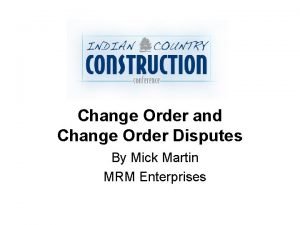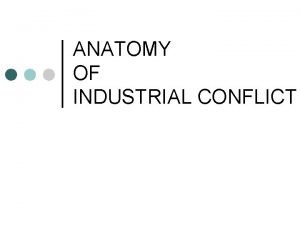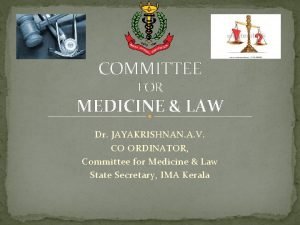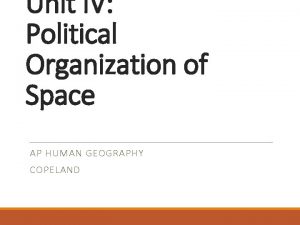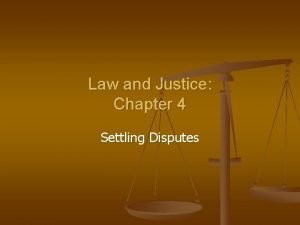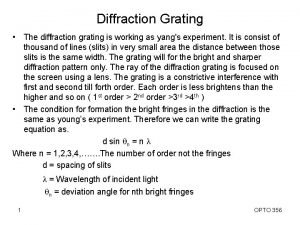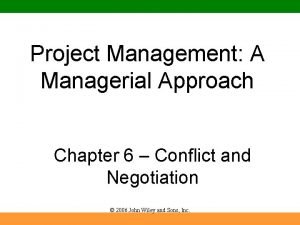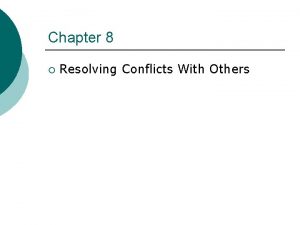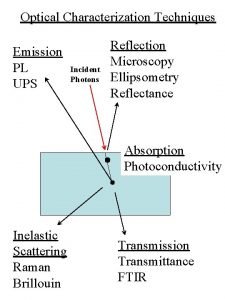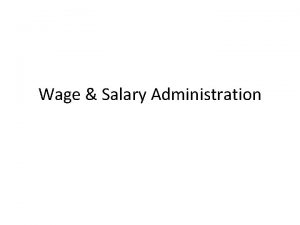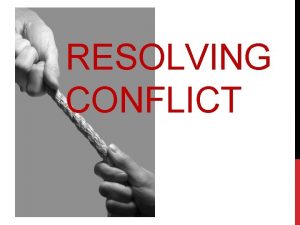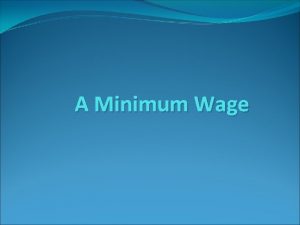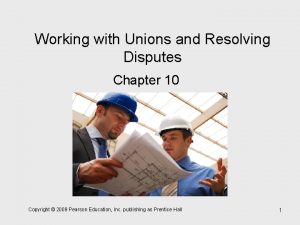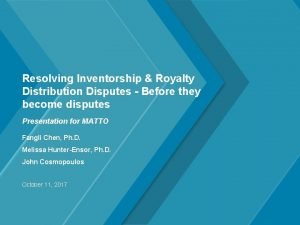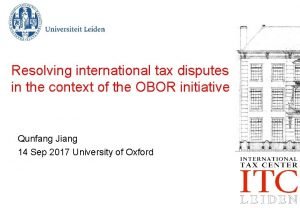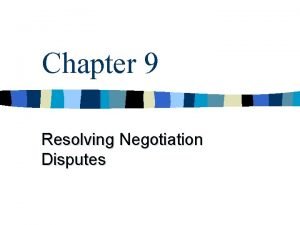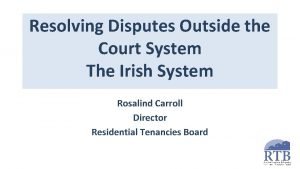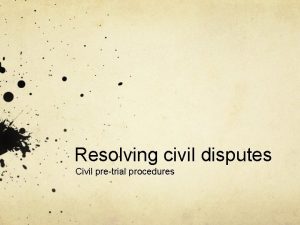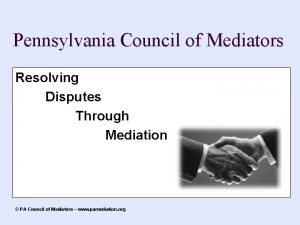Resolving Disputes Causes of Disputes 1 Wage Demands


















- Slides: 18

Resolving Disputes

Causes of Disputes 1. Wage Demands – The demand for wages has never been fully met because of inflation and high cost of living – Managements and unions will have a wage agreement generally valid for three years 2

Causes of Disputes (Contd. ) 2. Temp and Contract Labour – What is more relevant in this context is the wage disparities that exist between a regular employee and his counterpart who is a temp or the on contract – The Contract Labour Act, 1970 stipulates that no contract labour can be appointed for a permanent work – Disparities in remuneration, step motherly treatment, and social disconnect make a large percentage of employees vulnerable and potential source of unrest 3

4

3. Political Interference – Major trade unions are affiliated to political parties – Distant ideological issues divide and fragment unions on party lines – Inspired by their political ideologies, certain unions refuse to sign an agreement even if it is favourable to all the workers – Every political party somehow engineers strikes, gheraos and bandhs to demonstrate its political strength 5

6

Causes of Disputes (Contd. ) 4. Technology – Fear of new technology, skill gap and resistance to change are some points relevant in this context – One gets the impression that eight hours of intense physical work is seen as the ceteris paribus of the assembly line – For a worker, line acceleration can be a harrowing experience 7

5. Trade Unions – The Constitution of India guarantees a right to form unions in industrial establishments. – However, management of an organisation refuses to recognize workers‘ union sparking protests, strikes and even violence – At the other end of the spectrum is the presence of multiple unions resulting in rivalry among them – Multiplicity of unions poses peculiar problems to management. One such problem relates to the authenticity of memberships 8

Strike video 9

Settlement of Disputes Settlement Mechanisms 10

Settlement of Disputes (Contd. ) 1. Collective Bargaining – Approaches to Collective Bargaining: • Process of Social Change • Peace Treaty • Example: In USA , India 11

Settlement of Disputes (Contd. ) • Collective Bargaining – Process The Collective Bargaining Process 12

Settlement of Disputes (Contd. ) 2. Code of Discipline – To ensure that employers and employees recognise each other’s rights and obligations – To promote constructive co-operation between the parties concerned at all levels – To secure settlement of disputes and grievances by negotiation, conciliation and voluntary arbitration – To eliminate all forms of coercion, intimidation, and violence in IR – To avoid work stoppages 13

Settlement of Disputes (Contd. ) 3. Grievance Procedure – All labour agreements contain some form of grievance procedure – Conditions which may give rise to a grievance are: • A violation of law • A violation of company rules • A change in working conditions or past company practices • A violation of health and/or safety standards 14

Settlement of Disputes (Contd. ) • Grievance Procedure 15

Settlement of Disputes (Contd. ) 4. Arbitration – Arbitration is a procedure in which a neutral third party studies the bargaining situation, listens to both the parties and gathers information, and then makes recommendations that are binding on the parties – Some weaknesses are: • Arbitration is expensive • Too much arbitration is not a sign of healthy IR • Example: IN UK 16

Settlement of Disputes (Contd. ) 5. Conciliation – Conciliation is a process by which representatives of workers and employers are brought together before a third party with a view to persuading them to arrive at an agreement by mutual discussion between them – The Industrial Disputes Act, 1947 provides for the appointment of conciliators – Main duty of a conciliation officer shall be to mediate in and promote the settlement of industrial disputes – The other duties are: • To hold conciliatory proceedings • To investigate the dispute • To send a report and memorandum of settlement to the appropriate government • To send a full report to the appropriate government setting forth the steps taken, in case no settlement is arrived at 17

Settlement of Disputes (Contd. ) • Adjudication – Adjudication means a mandatory settlement of an industrial dispute by a labour court or a tribunal – Disputes are generally referred to adjudication on the recommendation of the conciliation officer who had dealt with them earlier – The system of adjudication is the most significant instrument of resolving disputes – It has been criticised because of the delay involved in resolving conflicts – Continued dependence on adjudication deprives the trade unions of their right to recognize and consolidate their strength – Example: India 18
 Change order disputes
Change order disputes Evolution of the contemporary political pattern
Evolution of the contemporary political pattern Anatomy of industrial disputes
Anatomy of industrial disputes Antecedent boundary example
Antecedent boundary example Consumer disputes redressal agencies
Consumer disputes redressal agencies Why might fishing disputes arise in the region
Why might fishing disputes arise in the region Consumer disputes redressal agencies
Consumer disputes redressal agencies Examples of locational boundary disputes
Examples of locational boundary disputes Chapter 4 settling disputes
Chapter 4 settling disputes Tucker turtle pdf
Tucker turtle pdf Resolving power of grating
Resolving power of grating The favored technique for resolving conflict is
The favored technique for resolving conflict is Chapter 9 resolving conflicts and preventing violence
Chapter 9 resolving conflicts and preventing violence Resolving conflict meaning
Resolving conflict meaning Chapter 9 resolving conflicts and preventing violence
Chapter 9 resolving conflicts and preventing violence Resolving conflict creatively program
Resolving conflict creatively program Resolving power equation
Resolving power equation Managing conflice in the local church
Managing conflice in the local church Resolving power
Resolving power
